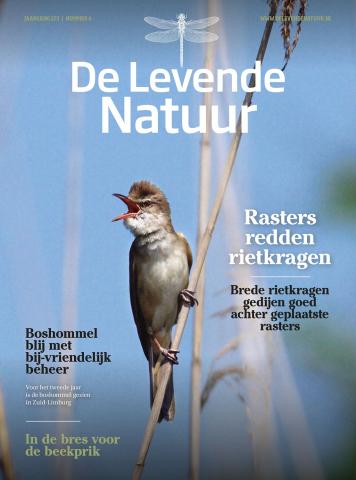De Levende Natuur nummer 4 van 2022 (English summary)
Afbeelding

Conservation measures for brook lamprey in Limburg (The Netherlands)
Frank Spikmans, Jisk van den Ende, Jeroen Tummers, Arnold Bakker, Barend van Maanen & Esther de Jong
Brook lampreys are an indicator species for the restoration of lotic habitats. The species requires pristine brooks or streams. Given their current mediocre conservation status, a management plan was developed to determine and prioritize conservation efforts for the species. Brook lamprey distribution in Limburg declined with 60% in the past century. Five populations remain, of which one is close to extinction due to droughts. Habitat quality shows shortcomings in water quality, hydromorphology, water regime and connectivity. Unoccupied streams lack even more in habitat quality for brook lamprey, although a few display good potential. Conservation measures are needed to further improve habitat quality. Integral restoration of stream valleys promises to be the most effective in facilitating recovery of water quality, water regime and connectivity, and ultimately benefits populations of brook lamprey among others.
Landscape-level collaboration brings wild bee back to shrill carder bee landscape
David Kleijn, Ruud van Kats, David Kingma, Ivo Raemakers, Janneke Scheeres & Jeroen Scheper
In 2018, 11 stakeholders in the extreme south of the Netherlands started a collaboration to increase the quality of a 30 km2 large landscape to support wild bees. The objective of this ‘Shrill carder bee landscape Geul Valley initiative’ is to enhance the wild bee community by increasing the availability and continuity of flowers on farmland, in public space and in nature reserves. In 2020 partners implemented bee-friendly management in more than 40 sites in 5 different habitat types: field margins, hedges, roadside verges, pastures and water retention sites. The initiative uses a learning-by-doing or adaptive management approach and implements an intensive monitoring program. Baseline conditions in flowers and bees were established in 2018-2019 and the initial response to bee-friendly management was determined in 2020-2021. Preliminary analyses of the data do not yet show significant positive effects of bee-friendly management on flowers or bees, possibly because the baseline conditions showed relatively high bee numbers. Trends in bees were positively related to increases in flower availability and diversity independent of management. Increases in Red Listed bee species were negatively related to the percentage of intensive farming and distance to species rich grasslands. Continuous monitoring plays a key role in the constant optimalisation of management and the communication with the public.

